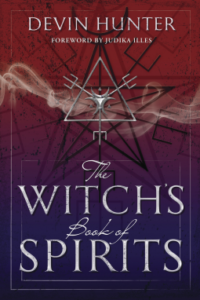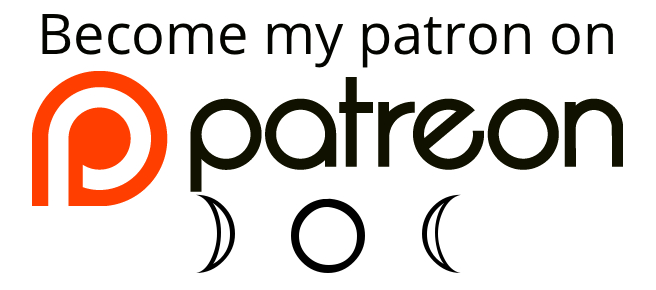REVIEW: “THE WITCH’S BOOK OF SPIRITS” BY DEVIN HUNTER
Coming on July 8, 2017
from Llewellyn Publications
AMBER LOVE 04-APR-2017 Content like reviews are supported by donors at my tip jar on Patreon.com/amberunmasked. You can also buy my books and share the links.
PUBLISHER’S SUMMARY:
Working with spirits is one of the cornerstones of the witch’s art, laying the foundation for deep spiritual growth and the advancement of your witch power. The Witch’s Book of Spirits shows you how to perform rituals and magic with a wide range of spirits, meet and work with your familiar, and exorcize spirits when needed.
Explore the foundational teachings of psychic processing and profiling that gives you insight into the inner workings of the Witch’s Tree and the planes and peoples who dwell in its many layers, including angels, demons, faeries, and ancestors. Discover new approaches to soul flight, mediumship, and conjuration. Expand the scope of your magic with the intimate system known as The 33 Spirits, transmitted to the author by his familiar and a special priesthood of spirits.
Witchcraft is deep work. In The Witch’s Book of Spirits, Devin Hunter invites you to push yourself to the edge of your comfort zone and get your hands dirty as you cultivate your personal power and deepen your relationship with seen and unseen forces.
REVIEW:
Devin Hunter was highly acclaimed in the pagan community for his book, The Witch’s Book of Power. That one escaped my radar for reviewing. When I was doing research on modern witchcraft and went to my favorite supply shop, Mystickal Tymes in New Hope, PA, owner Eric Lee mentioned Devin Hunter. I didn’t think too much of it at the time, but then happily discovered Hunter’s follow up book on NetGalley, The Witch’s Book of Spirits.
I was even more surprised when Hunter mentioned Jason MillerRead my recap of the class, a fellow pagan author and teacher, who led the scrying workshop I took years ago at Mystickal Tymes. I already felt a connection to Hunter and this book before I finished it.
The foreword was written by Judika Illes, author of Encyclopedia of Spirits and Encyclopedia of Witchcraft. She referenced one of my all-time favorite comic book characters, Madame Xanadu. Another check in the “win†column for me.
Unfortunately the galley copy doesn’t include images so I missed out on some very important content that consumers will get to enjoy. The Keys of Hecate, other seals for spirits, and representations of some spirits will be included in the published copy.
My only criticism, and it’s not a big one, is that Hunter says he’s not into high ceremonial magic, yet his rituals for the Witch Tree, the Compass, and Keys of Hecate are quite ceremonial. All that aside, my favorite part of his rituals was the purple crown.
“Ceremonial magic, as we will discuss again when we talk about demons, is really the magic of the aristocracy, at least in its invention. It was more related to alchemy and philosophy than it was to medicine or enchantment. Ceremonial magic was difficult and expensive and labor-intensive and had/still has an air of exclusivity about it.â€
Hunter gets props for not being a racist and avoided using the phrase “spirit animal†when referencing animal type spirits. He goes to considerable lengths to explain that your living pet is different than what is meant by “familiar†spirit. That was a particular hangup for me because language does evolve. While I agree, we should never say “my spirit animal is…†if we’re non-Native American, I think the word familiar has evolved as words do. New words and new meanings are added to the dictionary every year. So on this point, I respectfully disagree with Hunter that living animals who assist you in the Craft are not familiars. To each their own.
“Familiar spirits are not your cat or your dog, that is a giant misconception. Your pet is an animal ally, one that you can learn a lot from but make no mistake, they are no familiar.â€
Something I did love was his conversational tone. The work is masterfully heavy and deep; his sporadic anecdotes were invaluable to break up all the overwhelming information. He also gives alternatives for vegan friendly options in spellwork; and he notes that some activities are things people might not physically be able to do because of their health or state of their body so considerations are also mentioned for that.
Throughout the book there are plenty of examples of how world religions intersect. Hunter has taken the time to sift through various mythologies to identify what he feels are the most accurate versions of the spirit world. Also, like my teachers of the Craft, he explains that the words “positive†and “negative†or “angel†and “demon†have nothing to do with “good†and “evil.†When something is malevolent, Hunter is specific in identifying which spirit types to avoid.
The Witch’s Book of Spirits is broken into three large parts: The Familiar Craft, The Spirits of the Art, and The Grimoire of the 33 Spirits (The Book of the VEXNA-KARI). At the end of chapters, he includes assignments that readers can try on their own; he provides question prompts for them to record in their journals about their experiences testing his methods.
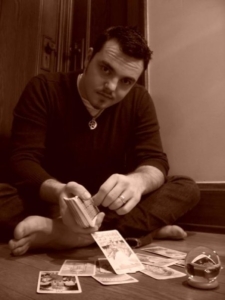
Source: Facebook
Part One: The Familiar Craft
You’ll get a lot of meat out of this section of The Witch’s Book of Spirits. It provides a massive amount of information on proper terminology and processes. Flying, conjuring, keeping yourself safe, mediumship, and the planes of existence are all covered in detail. He identified three separate types of mediums: psychic medium, mental medium, and physical medium. Those are defined early on so readers understand what they may have personally experienced.
“I define the Familiar Craft as the magical and psychic art of working with the spirit beings and frequencies that reside in all realms of existence. In my traditions of both Sacred Fires and Black Rose Witchcraft, we see the Familiar Craft as containing three equally important studies: the art of mediumship, the art of flying, and the art of conjuration.â€
Hunter continuously reminds the reader to take precautions and gives steps in how to keep unwanted spirits at bay or how to remove them if they latch on. He does not hold back when it comes to explaining how many charlatans are out there, especially the ones on television or trying to get a show of their own.
Part One includes reminders of common sense, but areas that are worth mentioning since throughout history, abuse has occurred. Always keep your promises (contract) with the spirits. Don’t desecrate spaces (houses, cemeteries, nature). Never act aggressively towards a spirit to provoke them. Don’t force your beliefs on someone else. Be respectful of a spirit’s background (this was uniquely important: Hunter instructs the reader to learn if the spirit is Irish, Sumerian, Voodou, or anything else, because any interactions should bear that history in mind).
In Part One, Hunter broaches the subject of mental illnesses like depression and addiction. I was a little alarmed here, but much later in the book where he explores realms of lower beings, this is explained more thoroughly. It is important to note that any such condition could produce blocks to your higher-self and psyche, he states.
Many myths about the Craft are debunked. One of the most visible being the “evil†use of talking boards and the fact that game company Hasbro owns the rights to “Ouija†as a brand name. However, talking boards, when used properly are a useful tool. Hunter goes through several other tool methods as well including Tarot cards, pendulums, and dowsing rods.
Part Two: The Spirits of the Art
Hunter names four most common types of spirits: angels, the dead, faeries, and demons. Again, there’s so much information in this that each of these parts of the book could stand on their own. Classifications and races of these four types of spirits are broken down.
“In truth, angels don’t belong to any one religion because they aren’t something you can own or have dominion over.â€
Especially when it comes to Angels and Demons, Hunter tackles the fundamental controversies of calling one thing good and another thing evil. When it comes to magical tools that may assist in working with any of these spirits, Hunter gives suggestions for stones/crystals, metals, or other natural elements like herbs, feathers, or water.
Chapter Eleven: The Dead is where readers will find information about ancestor spirits and the differences in ghosts and hauntings. Like other topics, when it comes to the phenomenon of orbs, Hunter does not hold back in saying most are not authentic evidence of spirits; however sometimes they are. Most of the time, as explained by skeptics, orbs are usually dust particles in photos.
Faeries are covered in Chapter Twelve. Here, he even warns that the subject matter is complicated. The Fae are deeply connected to our planet. They are divided into the Seelie Court or the Unseelie Court. The Seelie Court of Fae is generally thought of as the kind of Fae that you could work with; whereas the Unseelie Court is known for bringing misfortune. Besides their Dispositions, Faeries are classified by their Cultures, Kingdom, and Race also.
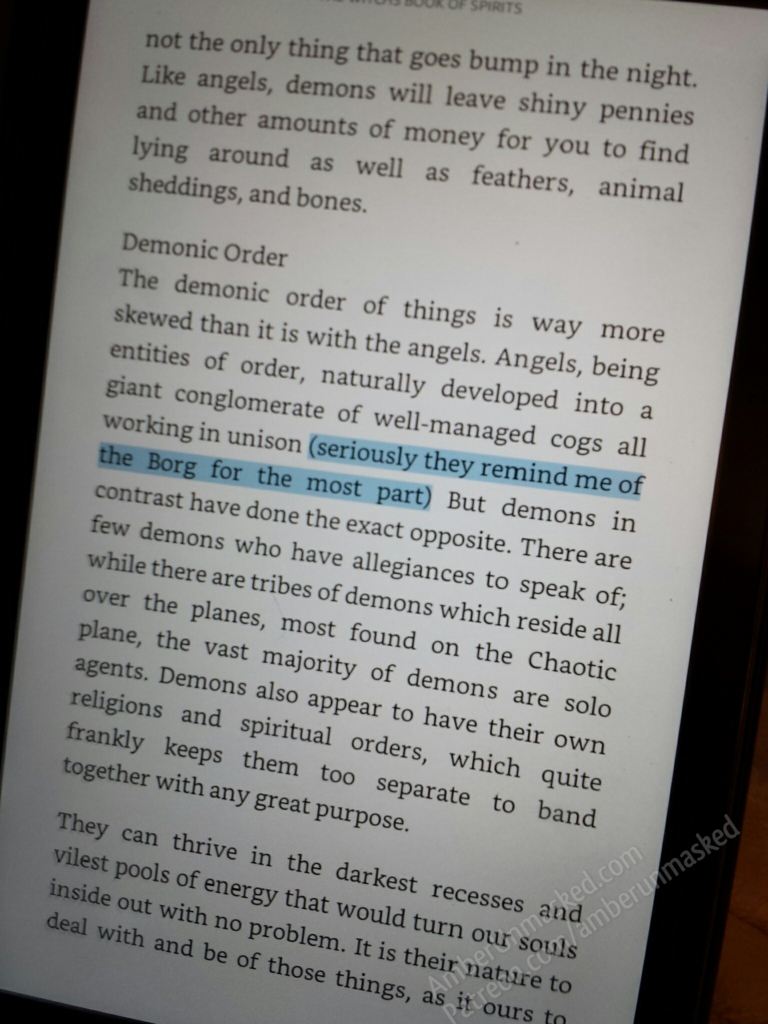
And finally, Demons are covered in Chapter Thirteen. Demons, he explains, basically do the same things as Angels only they go about it differently. Demons like chaos and destruction. They are vital to the ecosystem of the spiritual worlds.
Hunter addresses Demons just like the other spirits. He breaks them down into races: The Unhallowed, Devils, The Fallen (Angels), Imps, and Mental Demons. Each reader will likely find themselves gravitating to learn more about a particular type. Hunter’s categorization of Mental Demons is an important distinction from other scholars. He even notes, “I had debated adding this category…†Mental Demons are the ones that Hollywood films would like to show as the source of anguish to be exorcised from their prey; however Hollywood and scholars of the past would simply call them “The Devil†or “Demons†without noting differences. This is the part where Hunter gets into mental health and illnesses with further clarification than in Part One. He includes seeking medical help in with his advice on how to rid a person of Mental Demons.
Part Three: The Grimoire of the 33 Spirits or the Book of the VEXNA-KARI
There is a faster pace to this final part of the book. Like holy scriptures, the author says he received this information after his familiar Malach told him to write it as part of their working contract. Hunter kicks off this section with humorous personal reflection about the message he received from Malach and then the messages that came through afterward from the 33 Spirits.
The VEXNA-KARI are a triad in the priesthood of the Nephilim. They preside over the other 30 uniquely interesting and diverse spirits. Each spirit has a specialty they can help someone with in life: breaking patterns, finding love, having sway over financial matters, making oils or potions, working with herbs and plants, spirit cleansing, and so on.
After consuming all the information in the first two parts, this section was a breath of fresh air. It’s not that all the subject matter is lighter (there’s still talk of the damned), but it showcases practical application for all of the overwhelming data that was learned in the earlier chapters.
FINAL THOUGHTS:
The Witch’s Book of Spirits is a must-have if you are interested in broadening your understanding of the spirit world beyond Theosophy or television psychics. There’s so much information presented, readers basically earn a Bachelor’s Degree in the Spirit Arts after digesting all of it. It took me a month to read, but it was worth it.
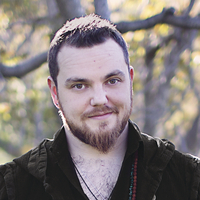
About Devin Hunter:
Devin Hunter (Antioch, CA) holds third-degree initiations in both the Northern Star Tradition of Wicca as well as the Dianic Tradition of Witchcraft (the Cult of Diana) and is the founder of his own tradition, Sacred Fires. His podcast, The Modern Witch, has helped thousands of people from all over the world discover and develop their magical abilities. Devin is currently teaching with the Black Rose School of Witchcraft and is the reigning Master of Ceremonies at the New Orleans Witches’ Ball.


